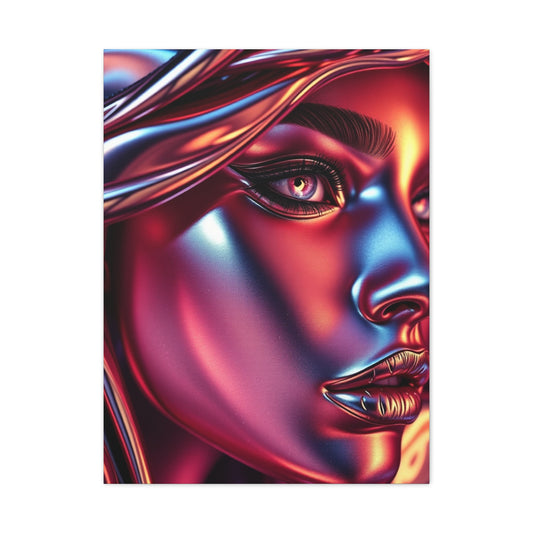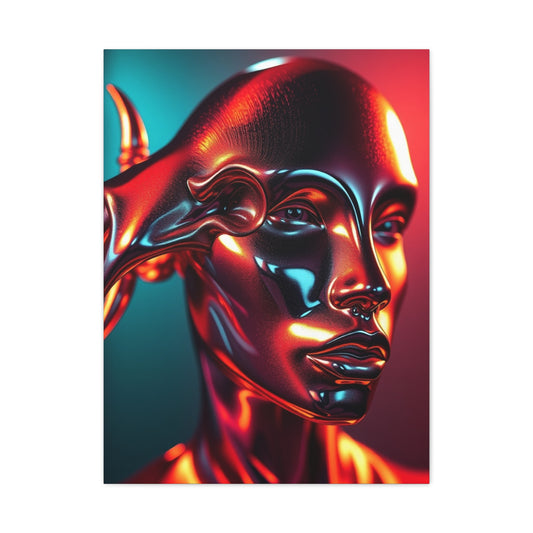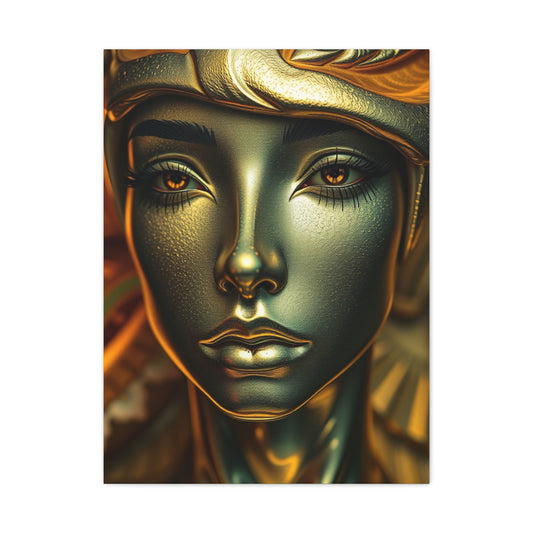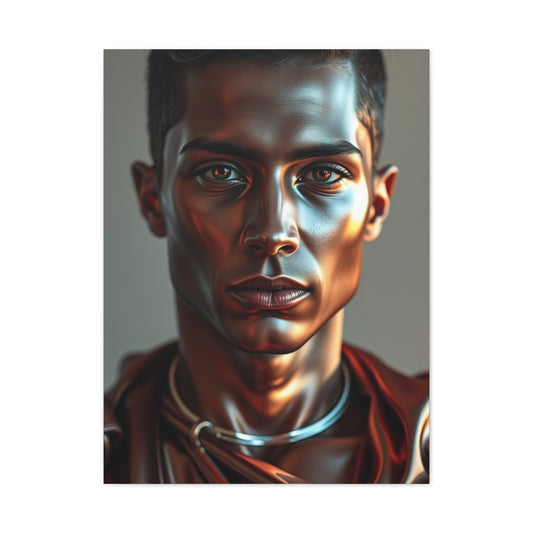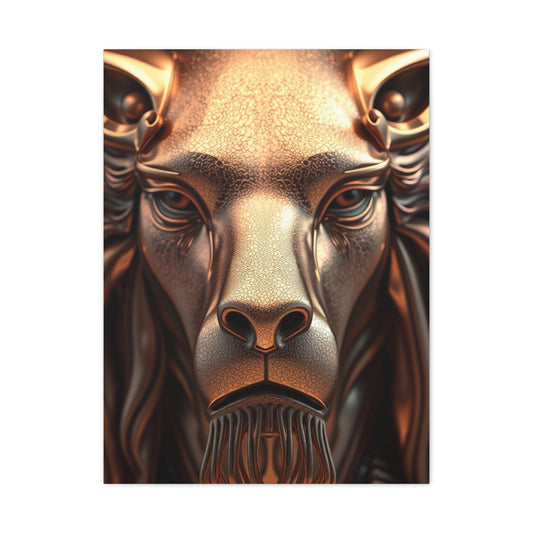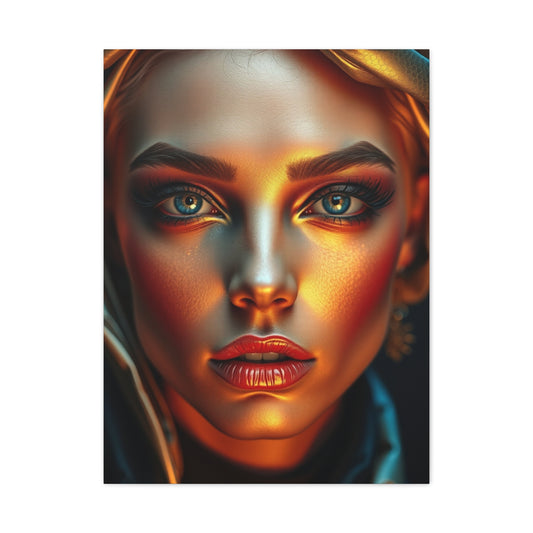The Art of Displaying Luxe Metallics Wall Art with Style
In the ever-evolving world of interior design, few décor elements manage to combine strength, elegance, and versatility as effectively as metal wall art. Unlike temporary accents that fade with trends, these artistic creations carry a timeless quality that allows them to anchor a room while still adapting to shifts in style. Their ability to blend industrial sophistication with delicate artistry makes them a cherished choice across diverse home settings, whether it’s a minimalist city loft, a rustic countryside retreat, or a coastal-inspired sanctuary.
The allure of metal art lies not only in its durability but in its capacity to bring visual dynamism to a space. With reflective surfaces, intricate cut-outs, and finishes that range from brushed aluminum to bold matte black, each piece interacts with light and shadow in ways that canvas or paper simply cannot. For many homeowners, the appeal extends beyond aesthetics; it represents an investment in décor that can withstand daily life, from bustling family living rooms to serene outdoor patios.
This guide delves deep into the history, styles, and applications of metal wall art, offering an immersive journey into why these works continue to captivate both seasoned designers and everyday décor enthusiasts. By the end, you’ll have a holistic understanding of how to choose, style, and curate pieces that not only complement your environment but elevate it into a personal gallery of enduring expression.
Historical Background
The history of metal wall art stretches back centuries, rooted in humanity’s early relationship with metalworking. Long before decorative art was mass-produced, artisans used bronze, iron, and copper to forge religious symbols, weaponry, and ornamental pieces for temples and homes. Ancient civilizations, from Mesopotamia to Egypt, recognized the permanence of metal as both a practical and aesthetic medium. Wall-mounted plaques, ceremonial shields, and decorative motifs often carried stories of mythology, spirituality, and power, transforming bare walls into cultural tapestries.
During the Middle Ages, metal craftsmanship expanded with intricate wrought iron gates and ecclesiastical adornments that mirrored Gothic architecture’s grandeur. By the Renaissance, artists began blending functional design with decorative artistry, creating panels and metal reliefs that celebrated both divine and human achievements. The Industrial Revolution later democratized metal art by making steel and aluminum more accessible, enabling homeowners to incorporate decorative accents into their private spaces.
In the twentieth century, with the rise of modernism and abstract expressionism, artists began to push the boundaries of what metal could represent. Sculptural wall hangings emerged, combining geometric precision with free-flowing forms. Today, the tradition continues, but with an expanded palette: contemporary metal art often includes laser-cut designs, mixed-media creations, and high-definition metal wall art landscapes that capture photographic realism. This lineage reflects a continuous dialogue between tradition and innovation, where every piece carries echoes of its historical predecessors.
Core Concepts and Foundations
At the foundation of styling metal wall art is an understanding of what makes it distinct. Unlike traditional paintings or prints, metal art interacts directly with its environment, relying on material properties to deliver its impact. The sheen of polished steel, the rugged patina of weathered copper, and the interplay of matte versus gloss finishes all contribute to the emotional resonance of a piece.
Three core concepts define metal wall art: texture, dimensionality, and durability. Texture gives metal its tactile quality, often inviting viewers to lean closer and study the details. Dimensionality comes from the way metal art can project from the wall, casting subtle shadows that change throughout the day. Durability ensures that these pieces not only survive but thrive in varied environments, whether exposed to the sunlit expanse of a living room or the moisture-rich atmosphere of a bathroom.
Another foundational concept is harmony. A piece of metal art should not exist in isolation but as part of an integrated décor narrative. This means balancing shapes, tones, and themes with surrounding furniture, textiles, and architectural features. The reflective properties of metal add complexity to this balance, since the art not only displays itself but also mirrors aspects of the room, creating layered perspectives. This dynamic interaction is what elevates metal art from mere decoration to an active participant in the ambiance of a space.
Types and Categories
Metal wall art comes in a vast spectrum of types and categories, each offering a unique way to transform interiors. Understanding these categories helps homeowners and designers select pieces that align with their vision.
One popular category is abstract metal wall art, defined by bold, non-representational shapes and patterns. These pieces thrive in modern or minimalist spaces, where their fluid forms and layered designs inject energy and intrigue. They can evoke emotions without depicting literal subjects, making them versatile anchors for rooms that emphasize creativity and open interpretation.
Another category gaining traction is large metal wall art. These statement pieces are designed to command attention, often placed on expansive walls in living rooms, entryways, or offices. Their sheer scale transforms them into focal points that set the tone for an entire space. Large works can be geometric, figurative, or abstract, but their impact lies in the way they dominate the visual field, creating a sense of grandeur and intention.
Metal wall art landscapes offer a different kind of allure. By blending photography with the permanence of metal, they capture scenes of natural beauty with unparalleled clarity. A mountain sunrise, a tranquil beach, or a dense forest rendered on a reflective surface can evoke serenity while adding depth to the room. The sharpness of metal-printed landscapes enhances details like rippling water or delicate leaves, bringing a slice of the outdoors into your home.
Functional metal art also belongs to this spectrum. Pieces such as metal clocks, organizational boards, or sculptural shelving combine utility with design, blurring the line between practicality and aesthetic pleasure. Similarly, mixed media pieces incorporate wood, glass, or fabric with metal to create hybrid artworks that play with contrasts.
This breadth of categories ensures that there is metal art suited for every taste, whether one leans toward avant-garde expressions or prefers the timeless tranquility of landscapes.
Practical Applications
Beyond its artistic appeal, metal wall art offers tangible applications in everyday living. Its durability makes it a go-to choice for high-traffic spaces such as hallways, kitchens, or bathrooms, where other forms of art might degrade. Because it resists moisture and sunlight, it is also perfectly suited for outdoor areas, such as patios or garden walls, where it can harmonize with natural surroundings.
In living rooms, large metal wall art can anchor seating arrangements, providing a unifying element that ties together couches, tables, and lighting. In bedrooms, more subtle abstract pieces or calming metal wall art landscapes can cultivate tranquility, serving as visual sanctuaries that encourage rest. Dining areas benefit from reflective or metallic-toned pieces that amplify light and spark conversation, while offices often utilize abstract or geometric designs to inspire focus and creativity.
Commercial spaces have also embraced the power of metal art. Restaurants use it to create memorable atmospheres, while hotels deploy grand installations in lobbies to set an opulent tone. Even corporate offices rely on metal wall art to reflect brand identity and professionalism, reinforcing a sense of modern sophistication.
Metal art’s versatility extends to personalization as well. With advancements in printing technology, individuals can transform personal photographs into high-definition metal prints, turning cherished memories into lasting works of art. This fusion of personal significance and artistic presentation makes metal wall art not just a decorative choice but an extension of identity.
Ultimately, the practical applications highlight that metal art is more than ornamental—it is functional, durable, adaptable, and deeply personal, ensuring its relevance in both residential and professional contexts.
Techniques and Methods
Styling metal wall art effectively requires more than simply hanging a piece on the wall. It is about understanding spatial relationships, visual harmony, and the psychological effect that different textures and colors have on an environment. Interior designers often emphasize proportion, symmetry, and balance when working with metal art, as these principles can either amplify the impact of a piece or undermine its presence.
One of the most effective techniques is layering. Metal wall art can be complemented by surrounding décor, such as mirrors, textile wall hangings, or even smaller framed artworks. This layered approach produces depth and allows the metal to stand out without appearing isolated. For instance, a large abstract metal wall art piece positioned above a sofa can be flanked by slim wall sconces or decorative panels, creating a sense of cohesion and rhythm.
Another method involves aligning metal art with architectural features. If a room has a central fireplace, a vaulted ceiling, or wide windows, the artwork should harmonize with these lines rather than compete with them. Hanging metal wall art landscapes above a mantelpiece, for example, echoes the horizontal expanse of the architecture and enhances the room’s natural symmetry.
Color integration is equally vital. Metal art often features reflective or metallic hues, so pairing these with complementary wall colors or furnishings can amplify the intended effect. A brushed silver piece may gleam against a deep navy wall, while a copper-toned design finds resonance in earth-toned interiors. Lighting is another indispensable method, as metal surfaces thrive under carefully angled illumination. Downlights or track lighting can transform an ordinary artwork into a radiant focal point that shifts with the viewer’s perspective.
Lastly, creating a narrative is a technique often overlooked. Every piece of art tells a story, and metal artworks are no exception. By arranging multiple pieces into a gallery wall, homeowners can weave a visual journey. An ensemble of abstract designs, large central works, and smaller landscape scenes can create progression and movement, guiding the eye across the wall while maintaining cohesion. This transforms the space into more than just décor; it becomes a curated expression of personality and memory.
Challenges and Common Mistakes
Despite its beauty and resilience, working with metal wall art comes with challenges that can compromise its impact if not addressed thoughtfully. One of the most common mistakes is disregarding scale. Oversized pieces in small rooms can overwhelm, while tiny works on expansive walls risk looking insignificant. Achieving balance requires carefully measuring wall space and envisioning how the artwork interacts with surrounding furniture and architectural lines.
Another frequent misstep is ignoring context. A striking industrial-style design may look stunning in a loft apartment but clash in a rustic farmhouse unless paired thoughtfully with complementary décor. Similarly, abstract metal wall art placed in a traditional living room without transitional elements may feel disjointed rather than harmonious. Contextual awareness ensures that each piece enhances rather than disrupts the room’s atmosphere.
Lighting mismanagement also ranks high among errors. While metal thrives under proper illumination, harsh direct light can create glare, diminishing the details of the piece. Conversely, inadequate lighting can flatten textures and render reflective surfaces dull. Striking the right balance between natural and artificial light is key, with adjustable fixtures offering flexibility to adapt throughout the day.
Mounting is another challenge often underestimated. Metal art tends to be heavier than canvas or paper prints, so secure installation is essential. Rushing this process or using weak anchors can result in accidents or damage. Professionals recommend considering both wall material and artwork weight before installation.
A subtler mistake lies in neglecting complementary décor. Hanging a piece without considering surrounding textures and tones risks leaving the art visually stranded. Pairing sleek metal with soft fabrics or wooden accents introduces balance, while ignoring such interplay can make a space feel incomplete.
Finally, a common error among homeowners is failing to rotate or refresh their arrangements. Even timeless works benefit from occasional repositioning or pairing with new pieces. Without this refresh, the décor can become stagnant, and the unique vibrancy of metal art may lose its intended effect.
Trends and Future Outlook
As design sensibilities evolve, metal wall art continues to adapt, reflecting both technological advancements and cultural shifts. One of the most prominent trends is personalization. With printing technologies enabling high-definition imagery on metal, homeowners are increasingly commissioning personalized metal wall art landscapes that capture favorite travel destinations, family portraits, or even abstract recreations of personal photographs. This evolution bridges the gap between mass-produced décor and deeply personal storytelling.
Minimalist interpretations are also on the rise. Abstract metal wall art featuring geometric shapes, clean lines, and monochromatic palettes align with contemporary desires for uncluttered, serene living spaces. These works thrive in urban apartments and modern offices, reflecting a wider cultural inclination toward simplicity and balance.
Conversely, maximalist trends have also found their place, celebrating large metal wall art installations that dominate entire walls with bold, intricate designs. These oversized pieces embody the spirit of confidence and self-expression, often seen in boutique hotels, upscale restaurants, and artistic residences.
Sustainability represents another important trend shaping the future. Designers are increasingly sourcing recycled or reclaimed metal, aligning with eco-conscious values. Pieces crafted from upcycled steel or copper not only contribute to sustainable practices but also bring unique patinas and textures that can’t be replicated in mass production.
Technological integration marks the next frontier. Artists are experimenting with LED-infused metal art, where light becomes part of the composition. These interactive works blur the line between traditional décor and digital innovation, offering dynamic pieces that shift with programmed lighting sequences or even respond to environmental cues.
Looking ahead, the future of metal wall art lies in its adaptability. As homes embrace hybrid styles that blend rustic with modern, industrial with natural, and digital with tactile, metal art will continue to serve as a bridge across these aesthetics. Its durability ensures longevity, while its versatility allows it to continually evolve alongside changing tastes and technologies.
Expert Insights
To better understand the artistry and practical applications of metal wall art, it helps to explore perspectives from designers and artisans who work with it daily. Many interior stylists emphasize that the secret lies in balance—knowing when to let the artwork command attention and when to integrate it subtly into a broader scheme. They argue that a piece of abstract metal wall art can transform a blank wall into a dynamic statement, but its power is amplified when paired with cohesive furnishings and thoughtful lighting.
Artisans who create metal pieces often highlight the material’s versatility. Unlike canvas, metal allows for techniques such as laser cutting, embossing, and layering, which produce textures and silhouettes unattainable in other mediums. These creators view metal as a living medium, one that interacts constantly with its surroundings through reflections, shadows, and light play. Their advice is to embrace this dynamism rather than try to control it entirely, allowing the artwork to evolve throughout the day.
Collectors and homeowners often remark on the emotional connection they develop with their pieces. A large metal wall art landscape may evoke memories of a cherished journey, while a bold abstract piece might serve as a daily source of inspiration. Experts suggest that buyers focus less on trends and more on resonance—choosing art that feels personal ensures longevity in its appeal, regardless of shifting fashions.
Interior design professionals also caution against viewing metal art as a stand-alone feature. They recommend considering the entire room as a canvas, with the artwork acting as one brush stroke in a larger composition. Whether it’s balancing metallic finishes with natural textiles or introducing contrast through color and texture, the key lies in integration.
Finally, experts predict that as technology and artistry continue to converge, the role of metal art will expand. With augmented reality tools already allowing homeowners to visualize pieces on their walls before purchase, the process of selecting and styling metal artworks is becoming more accessible and precise. This integration of artistry with technology will only deepen, ensuring that metal wall art remains not just a decorative choice but a cornerstone of modern interior design.
Emerging Trends in Wall Art
The world of interior décor is in constant motion, influenced by shifting cultural moods, technological innovations, and evolving lifestyles. Wall art, once confined to traditional paintings and framed prints, has become a dynamic arena of creativity where materials, textures, and narratives collide. Among these, metal wall art has emerged as a leading protagonist, embodying both resilience and modernity. Understanding current trends provides valuable insight into how these pieces can shape contemporary interiors.
One of the most compelling trends is the blending of organic and industrial aesthetics. Designers are increasingly combining metal with natural elements like wood, stone, and greenery to create hybrid compositions that celebrate both strength and softness. A metal wall art landscape of a forest scene, for example, can be paired with indoor plants and wooden furniture to cultivate a harmonious environment that reflects nature while embracing contemporary design.
Personalization is another defining trend. With the rise of custom printing technologies, homeowners are no longer limited to off-the-shelf designs. They can transform personal photographs into high-definition metal prints, capturing everything from family portraits to travel vistas. This trend reflects a growing desire for authenticity and individuality in décor, where every piece tells a unique story.
Scale has also become central to modern aesthetics. Large metal wall art has surged in popularity as statement pieces, often dominating entire living room walls or serving as the anchor for open-plan spaces. These oversized works convey confidence and intentionality, turning the home into a gallery-like experience. At the opposite end, miniature abstract pieces arranged in clusters or gallery walls bring playful versatility, allowing experimentation with layouts and color schemes.
Sustainability underpins many of these emerging practices. Eco-conscious designers are turning to recycled metals, reclaimed alloys, and artisanal techniques that minimize environmental impact. Such works not only embody responsibility but also carry distinctive textures and patinas that mass production cannot replicate.
The future also points toward technological fusion. Interactive art, including LED-enhanced metal designs and augmented reality integrations, is beginning to redefine what wall art can be. These innovations transform static works into kinetic experiences, making the artwork a living part of the home that evolves with light, sound, or even viewer interaction.
Collectively, these trends illustrate a movement toward personalization, scale, sustainability, and innovation, ensuring that wall art continues to evolve as both a functional and expressive form of design.
Step-by-Step Guides
Styling metal wall art successfully is not about chance; it is about deliberate choices that follow thoughtful sequences. To approach this like a professional, let’s walk through a structured guide that covers each stage, from concept to completion.
Step 1: Define Your Vision
Every successful décor project begins with clarity. Ask yourself what mood you want the room to convey. Do you want serenity, energy, boldness, or intimacy? Abstract metal wall art often conveys dynamism and curiosity, while a serene landscape in metal radiates calmness. Defining the emotional goal helps narrow down the choices, ensuring the artwork resonates with your space and personal taste.
Step 2: Measure and Assess the Space
Before falling in love with a design, consider the dimensions of your wall. Large metal wall art thrives in expansive spaces, while smaller or medium-sized pieces suit more intimate corners. Measure both the height and width of the available area and visualize how the piece will relate to furniture, lighting, and architectural features. Leaving sufficient breathing room around the artwork ensures it commands attention without overwhelming.
Step 3: Select the Style
Once your vision and space are established, turn your attention to style. If your interiors lean toward modern minimalism, abstract designs with sharp lines or fluid forms will integrate seamlessly. For rustic or nature-inspired themes, landscapes printed on metal create an organic connection. Transitional interiors benefit from versatile pieces that blend subtle geometric motifs with natural imagery. Your chosen style should not compete with the room but amplify it.
Step 4: Choose the Color Palette
Metal wall art interacts uniquely with colors because of its reflective nature. Pay attention to the tones already present in your space. If your living room features neutral shades, a vibrant metal print can serve as a focal point. Conversely, if your décor already has bold accents, a monochromatic or metallic-toned piece may bring harmony. Consider the way daylight or artificial light alters colors throughout the day, as reflections can shift subtly with changing light.
Step 5: Decide on Placement
Placement is a crucial step that can make or break the artwork’s effect. Positioning above a sofa, bed, or console table is common, but don’t shy away from unexpected spots such as stairwells, hallways, or kitchens. The artwork should align with eye level when possible, ensuring comfort for viewers. A single large piece works beautifully as a centerpiece, while multiple smaller works require a cohesive arrangement with consistent spacing.
Step 6: Integrate Lighting
Lighting transforms metal into a living presence. Experiment with natural and artificial light to discover how reflections alter throughout the day. Accent lighting, such as track lights or wall-mounted fixtures, can emphasize textures and contours. For more dramatic impact, use directional spotlights that create shadows, enhancing the dimensionality of abstract metal wall art. Soft ambient lighting, on the other hand, accentuates calming landscapes, making them feel immersive.
Step 7: Create a Gallery Effect
For those with multiple artworks, arranging them into a gallery wall adds narrative depth. This involves curating a mix of sizes, orientations, and even mediums. A central large metal wall art piece can anchor the display, surrounded by smaller abstract or photographic works. The key is cohesion—choose unifying elements like a shared color scheme or thematic consistency to prevent visual chaos. This method works particularly well in hallways or large open-plan areas where walls offer ample space.
Step 8: Harmonize with Surrounding Décor
Art should not exist in isolation. Balance the sleekness of metal with complementary textures in the room. Pair it with natural fibers such as linen, wool, or cotton to soften its bold presence. Introduce reflective accents, like metallic vases or mirrored surfaces, to echo its sheen. Even wall colors can be adjusted to create either contrast or subtle integration. This holistic approach ensures that metal wall art feels like an intentional part of the interior rather than an afterthought.
Step 9: Refresh with Seasons
One of the advantages of lightweight metal prints is the ease of repositioning. Refresh your interiors seasonally by rotating artworks or shifting their placement. Cool-toned abstract designs can energize a room in spring, while warm-hued landscapes add depth in winter. This dynamic approach ensures that your décor feels alive and aligned with the rhythms of the year.
Step 10: Maintain with Care
Finally, maintaining your metal wall art preserves its brilliance. Unlike delicate canvases, metal requires minimal upkeep. A soft cloth is often enough to remove dust or smudges. Avoid abrasive cleaners, which may scratch surfaces. With this simple routine, your artworks will retain their luster for years, continuing to elevate your interiors.
Emerging trends reveal that wall art is no longer just a backdrop; it is central to the identity of modern homes. The fusion of sustainability, personalization, and technological innovation ensures that metal wall art remains relevant and inspiring. Following a structured step-by-step approach transforms the process from overwhelming to empowering, helping you curate interiors that reflect not only contemporary style but also timeless character.
By blending vision with method, embracing trends while honoring personal taste, and balancing artistry with practicality, you can transform your living space into a gallery of enduring resonance. Whether through the bold statement of large metal wall art, the contemplative elegance of abstract designs, or the tranquil beauty of landscapes, each piece becomes part of your story, told not only on walls but through the atmosphere of your entire home.
Advanced Styling Strategies
Once the foundations of selecting, placing, and illuminating metal wall art are understood, the next level involves advanced strategies that transform simple decoration into a curatorial masterpiece. This stage is where seasoned interior designers distinguish themselves, blending intuitive artistry with technical precision.
One advanced strategy is thematic layering, where different pieces are grouped to tell a broader story. For instance, a large metal wall art landscape of a coastal horizon can be paired with smaller abstract designs in silver and aqua tones, together evoking the rhythm of the sea. This method extends beyond aesthetics, creating a narrative arc that resonates with visitors and homeowners alike.
Another refined technique is architectural echoing. This involves mirroring shapes and patterns from the built environment in your artwork. An arched doorway might be reflected in the curves of an abstract metal wall art design, while grid-like shelving can harmonize with geometric metallic compositions. Such dialogue between structure and décor creates a sense of continuity that elevates the atmosphere.
Designers also recommend experimenting with duality. This could mean juxtaposing a bold industrial piece with softer surroundings, or positioning a reflective artwork opposite a matte wall for heightened contrast. This play between opposites generates tension and depth, compelling the viewer’s gaze to linger.
For those drawn to maximalism, advanced strategies include creating immersive feature walls. By clustering multiple artworks of varying sizes and finishes, an entire wall becomes a tapestry of metal, where light refracts differently across each piece. This creates an almost kinetic quality, transforming the wall into a living surface that evolves with changing daylight and movement within the room.
Advanced styling also extends into multi-sensory design. Pairing metal wall art with ambient sounds, scented candles, or textured furnishings engages more than sight, creating an enveloping environment where art becomes part of a holistic sensory journey. This approach reflects a growing understanding in design theory: that décor is not static but an active participant in the lived experience of a home.
Integrating Metal Art into Different Spaces
The adaptability of metal wall art makes it suitable for nearly every room in a home or professional setting, provided that placement and style are considered carefully.
In living rooms, large metal wall art often becomes the focal point above a sofa or fireplace. Here, boldness is celebrated, and the piece sets the tone for the entire space. Pairing reflective finishes with soft rugs and warm lighting creates a balance between vibrancy and comfort.
Bedrooms benefit from more contemplative works. Abstract metal wall art with fluid lines or calming landscapes fosters tranquility, encouraging rest. Positioning above the bed or on a side wall ensures that the art complements rather than overwhelms the serene atmosphere.
Dining rooms thrive on conversation, making them ideal for captivating works. A striking metal wall art landscape featuring vineyards, cityscapes, or abstract bursts of color becomes not just décor but a catalyst for dialogue among guests.
Hallways and transitional spaces offer an opportunity to experiment. Smaller works or clustered gallery arrangements turn these often-overlooked areas into moments of discovery. As people move through the space, the shifting light and changing perspective bring fresh experiences with each pass.
Bathrooms, surprisingly, are increasingly adorned with metal prints. Their resistance to moisture makes them perfect for this environment, and a serene seascape or mountain vista can transform a utilitarian room into a sanctuary. Similarly, outdoor patios and garden walls embrace metal’s resilience, where weather-resistant finishes ensure the art retains its brilliance under sun and rain.
Professional spaces, too, have embraced the medium. Offices use abstract metal wall art to inspire creativity and focus, while hotels incorporate large-scale installations in lobbies to establish a sense of grandeur. Restaurants blend thematic artworks with their culinary identity, creating immersive atmospheres that linger in memory.
Cultural and Emotional Dimensions
Beyond the visual, metal wall art carries cultural and emotional resonance. Every piece reflects not only artistic vision but also cultural symbolism. Abstract metal wall art may echo the dynamism of modern urban life, while a metal wall art landscape might represent a longing for serenity and connection to nature.
Emotionally, the medium engages viewers through its tactile presence. The weight and permanence of metal convey stability, while its reflective qualities invite shifting perceptions. This interplay often stirs feelings of curiosity, nostalgia, or awe. For homeowners, the emotional impact extends further, as artworks can become repositories of memory. A large landscape may immortalize a cherished holiday destination, while a custom abstract piece might embody personal growth or transformation.
Cultural significance also arises through heritage. Many communities have long traditions of metal craftsmanship, from Middle Eastern filigree to Japanese ironwork. Modern adaptations of these traditions in wall art not only preserve heritage but also infuse contemporary interiors with cross-cultural richness. Owning such a piece is not just aesthetic but a way of participating in a broader cultural dialogue.
The Role of Light and Shadow
If one element can elevate metal wall art from striking to sublime, it is light. Unlike flat mediums, metal interacts dynamically with both natural and artificial illumination, transforming itself across the course of a day.
Morning sunlight may bring out soft glimmers in a brushed silver piece, while evening lamps cast dramatic shadows across a laser-cut design. Abstract metal wall art, in particular, thrives under directional lighting, where shadows accentuate its curves and cut-outs, making it appear almost sculptural.
Designers increasingly treat light not as a background necessity but as an artistic collaborator. Adjustable track lights, wall-mounted fixtures, or even subtle floor lamps can be angled to emphasize specific features. In some advanced designs, integrated LED strips are used to backlight metal pieces, giving them a floating, ethereal quality.
Shadow play is equally important. Intricate cut-outs project delicate patterns onto surrounding walls, turning a static work into an ever-changing installation. This ephemeral quality brings life and movement into interiors, ensuring that the art never feels static.
The Future of Metal Wall Art
Looking forward, the trajectory of metal wall art promises continued innovation and relevance. As sustainable living becomes a global imperative, reclaimed and recycled materials will dominate future creations. These eco-conscious works not only reduce environmental impact but also carry unique patinas and textures that speak of history and resilience.
Technological integration will further reshape the medium. Already, interactive designs respond to movement, sound, or light, transforming static décor into immersive experiences. Augmented reality tools are enabling homeowners to preview artworks on their walls before purchase, democratizing the process of curation and reducing uncertainty.
Globalization ensures that cultural fusion will play an increasing role. Artisans from different traditions are collaborating across continents, blending motifs and techniques into hybrid forms that transcend singular cultural narratives. This diversity enriches interiors, allowing homeowners to participate in a collective artistic dialogue.
Most importantly, personalization will remain at the forefront. Whether through custom prints, bespoke commissions, or modular designs that can be reconfigured, metal wall art will continue to reflect individual identity in ways that mass-produced décor cannot.
Conclusion
Metal wall art has moved far beyond a decorative afterthought; it has become a central element of modern design, merging durability with artistry, functionality with expression. From the serenity of metal wall art landscapes to the bold dynamism of abstract compositions and the grandeur of large installations, each category offers unique opportunities to shape and elevate interiors.
Through history, we see how metal craftsmanship has always reflected culture and innovation. Today, that tradition continues, but with expanded possibilities brought by technology, sustainability, and personalization. The journey of styling metal wall art is one of balance: between boldness and subtlety, tradition and modernity, permanence and fluidity.
By applying thoughtful strategies—defining vision, considering scale, integrating lighting, and harmonizing with surroundings—anyone can style their home with the confidence of a professional. Advanced techniques such as thematic layering, architectural echoing, and shadow play further deepen the impact, transforming walls into living canvases.
The future only amplifies this potential. With sustainable practices, interactive technologies, and cross-cultural fusion shaping the next generation of designs, metal wall art is poised to remain both timeless and forward-looking.
Ultimately, each piece of art becomes more than decoration; it is a reflection of personality, a vessel of memory, and a dialogue with space itself. Whether through the commanding presence of large metal wall art, the contemplative intrigue of abstract designs, or the tranquil embrace of landscapes, these creations invite us to see our walls not as boundaries but as opportunities—opportunities to tell stories, evoke emotions, and create environments that resonate for years to come.

